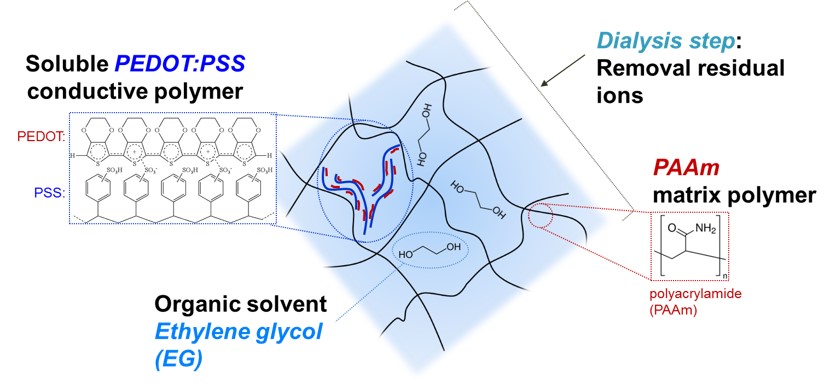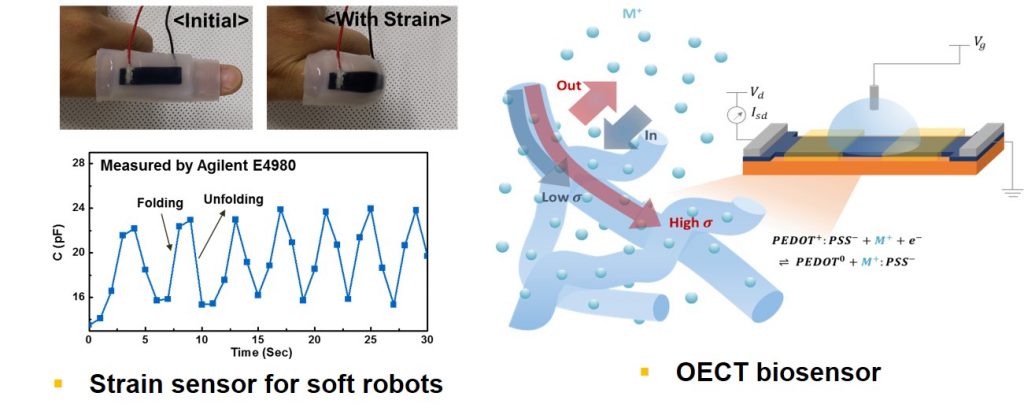The emergence of stretchable electronics has resulted in its use in an enormous range of applications in human wearable and attachable devices. Conventionally, metallic nanomaterials-based electrical conductors have been used for stretchable electronic conductors by using soft polymers as a matrix for metallic nanomaterials or designing the structure of metallic conductors, such as wavy structures on stretchable substrates. However, when worn or attached onto skin, structural collapse and defect generation of the metallic composites can occur during repeated mechanical deformation. Furthermore, due to the mechanical and biological incompatibilities of rigid metallic nanomaterials with soft human skin, severe instability such as interfacial delamination can arises.
Therefore, the realization of intrinsically stretchable electronic conductors compatible with human skin is required. Recently, we successfully fabricated gel based soft conductor by using PEDOT:PSS conductive polymers and the highly cross-linkable PAAm polymer. Thus, the polymeric conducting path is well maintained during stretching up to large strain and a strain insensitive resistance change is achieved during high fatigue cycle.
Based on the soft gel conductors, we plan to realize all soft and human compatible functional devices. The strength of the large stretchability, high electrical performance and environmental stability enable these soft gel conductors to be utilized as various wearable devices including stretchable sensors and actuators as well as stretchable electrical interconnects. The combination of organic and electronics fields will facilitate the progress of synergistic studies of wearable electronics and develop new classes of soft materials that will also support the new paradigm for biocompatible electronic devices.


